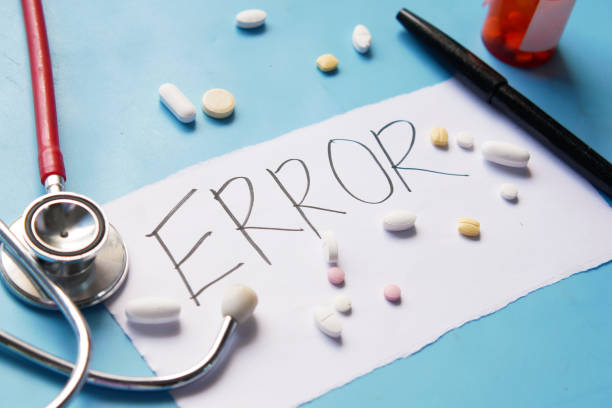What motivates shoppers to patronize an independent pharmacy rather than a big-box store or national chain? And how can you get them to purchase more from your front end?
Michael Solomon, a professor of marketing at Saint Joseph’s University and author of The New Chameleons: How to Connect with Consumers Who Defy Categorization, has spent his career helping companies use consumer behavior to make them more customer-centric. “Retailers still have the mindset that people go to stores just to buy things. That’s no longer the case,” he said.
Different people have different approaches to shopping. By learning what makes your patients tick, you can provide better products and services, improve loyalty, and encourage them to buy more.
Three types of shoppers
Solomon described three primary types of shoppers:
Task-oriented: These shoppers know what they want, so they go into the store, they find it, and they get out. “They value a clean layout and clear signage more than the experience of shopping,” Solomon said.
Recreational: “These are the people for whom shopping is an activity. It’s a social outlet,” explained Solomon. However, the Covid-19 pandemic has diminished these kinds of shoppers. With masking, plexiglass, and floor stickers encouraging six feet of distance, dramatically fewer people treat shopping as a fun activity these days.
Relationship-oriented: “They tend to value local businesses,” Solomon said. “They are the ones who want to walk into the store and be recognized by name. They tend to be the anti-Walmart shoppers.” If you can meet the needs of relationship-oriented shoppers, you can turn them into powerful allies for your pharmacy.
Reaching relationship-oriented shoppers
When thinking about consumer behavior, your relationship-oriented patients should be a priority. “It always surprises me when stores and retailers focus more on acquiring new customers than on nurturing the customers they have,” Solomon said. He points out that it’s more expensive to gain a new customer than to maintain a relationship with a current customer, “yet business owners lose sight of that.”
Foster your relationship with current patients by acknowledging what they do for your store. If you give them the right sort of attention, they can even become brand ambassadors. Acknowledge them through financial incentives, a loyalty program, or even just a shoutout on your website or social media pages. At no cost to you, you can honor your most loyal patients with a “Patient of the Week” feature on your Facebook page. This not only makes the chosen patient feel positive about your pharmacy, but it may also inspire warm feelings from others in the community because it demonstrates how strong your ties are. “The important thing is to not take them for granted,” Solomon said.
While you work to build relationships with your patients, you can also use what you know about consumer behavior to increase their basket size when they come into the pharmacy. “They may always come to you to pick up their prescriptions, but they aren’t necessarily buying other things. Cross-selling and upselling is really something that you have to focus on,” Solomon said. It doesn’t have to feel like a hard sell. Done right, cross-selling and upselling are additional ways to prove you know your patients well. You have a relationship with them, so you can recommend products and services that you know will actually improve their lives.
“The fact that you have them in the store is already a huge advantage,” Solomon said. “Give them a reason to visit other parts of the store that they don’t normally visit.”
Reaching task-oriented shoppers
Even though task-oriented shoppers are a tougher nut to crack, you can still get more out of their visits to your pharmacy. Patients have plenty of options to get the things they need through an online retailer or mail-order pharmacy, so the fact that they still choose to shop in person is already a win. “There are additional costs, both financial and psychological, to going into a store. Getting there, finding a parking spot, dealing with crowds,” Solomon explained. When patients choose to do their shopping at the pharmacy instead of ordering online, figure out a way to reward them for it.
Solomon posed the question, “What is the value-add that you provide to justify the additional time it takes to go to a physical store?” Task-oriented shoppers might be at your pharmacy only to pick up a prescription or only to buy a certain OTC medicine, but once you have them in the store, you have an opportunity to engage them and divert them from their single task.
For example, REI engages its customers by providing ways for them to try out products in the store, whether it’s testing a rock-climbing harness on a rock wall or trying on a jacket and getting doused in a rain chamber. Although your independent pharmacy may not take such extreme measures, you can still make sure patients have the opportunity to experience products beyond looking at them on the shelves.
You could give your store an educational focus and provide material to help patients learn about health conditions. Or you could get more out of your cosmetics aisle by providing free samples or displaying illustrations that demonstrate how to use them.
“It takes more creativity, but if you’re in the mindset that your store is basically a warehouse that people come to pick up stuff off the shelves and then leave, you’re eventually going to lose out to Amazon. There’s no way you can do that as efficiently as they do,” Solomon said. “You have to compete with that threat by doing things they can’t do.”
Personalizing merchandising
Knowing what kind of shoppers frequent your store will help you tailor product displays and selection to the specific demographics of your customers. “Understand who your customers are,” Solomon said, “and then develop your merchandising plan in accordance with that.”
When you know the wants and needs of your patient base, it affects not only what you stock but how you stock it. “If you’re trying to cram everything into a relatively small retail space and hoping people find it themselves, it’s probably not the best idea,” Solomon said. He encourages stores to think about the “atmospherics,” paying close attention to how people generally move through the store and which sections get the most traffic.
If you don’t have the resources to do formal research on your community, Solomon recommends taking advantage of your best patients and empowering them to help you understand your business. That means talking to them while they are in the store to find out what they like about the pharmacy and what they think would make the pharmacy better.
Not only could patients pass along great ideas, but asking them can also engender loyalty. “When we’re asked for our opinion, we tend to care a lot more about who asked it,” Solomon explained. “I think that’s especially true in health-related categories, where people want to be more empowered about their health decisions and see a pharmacist as a credible source.”
The future
The past year has changed consumer motivations and behavior significantly—including a massive acceleration of online purchasing. But Solomon sees one trend in consumer behavior that could work in the favor of independently owned businesses: loyalty.
“We’ve seen a big decrease in loyalty for at least the last 10 years, but we’re now seeing consumers value companies that give back,” he said. “Companies that are not just talking about it, but they’re really walking the walk.”
As an independent pharmacy, you have an opportunity to get involved in your community in a way that is impossible for big corporate chains. Set yourself apart and cement relationships by finding out what causes matter to people in your area and making a meaningful contribution. “People are looking for evidence that when they visit you, it’s not just a one-off transaction,” Solomon said. “They want relationships with entities they trust.”
 Recreational Shoppers
Recreational Shoppers
Who they are
Recreational shoppers view shopping as an activity, as a social outlet.
How to market
•Focus on the store experience as a value-added dimension to procuring medications and other products
•Show patients how their lives will improve if they participate in wellness education activities that the store may offer
•Be the “go-to” location for healthy living
How to merchandise
•Provide educational and “fun” stimulation in-store
•Use principles of gamification to make shopping for mundane products more engaging (like introducing competitions, badges or other rewards that test patients’ knowledge of medical/wellness topics)
Relational Shoppers
Who they are
Relational shoppers value local businesses. They want to walk into the store and be recognized by name. Their feelings of connection with the pharmacist and other staff are pivotal to winning loyalty.
How to market
•Talk to these patients, call them by nam
•Recognize their loyalty with titles, badges, or perhaps special discounts
•Solicit their advice about your store design and other strategic questions
How to merchandise
•Use signage, patient photos, and other collateral to underscore your store’s ties to the community
•Provide opportunities for pharmacy staff to forge relationships with patients, for example by hosting “meet and greets” or “lunchtime learning” sessions where you share information about medications and other health issues
Task-Oriented Shoppers
Who they are
Task-oriented shoppers know what they want. They go into the store, find it, and get out.
How to market
•Focus on convenience and efficiency
•Consider using a CRM (Customer Relationship Management) system to identify their needs in advance to expedite the process of dispensing prescriptions
How to merchandise
•Include adequate “wayfinding” signage in the store
•Avoid long lines that keep customers waiting to avoid “register rage”
From the Magazine
This article was published in our quarterly print magazine, which covers relevant topics in greater depth featuring leading experts in the industry. Subscribe to receive the quarterly print issue in your mailbox. All registered independent pharmacies in the U.S. are eligible to receive a free subscription.
More articles from the June 2021 issue:
- Are independent pharmacies missing out on the fastest-growing segment of the pharmacy market?
- Why this pharmacy network only buys from one secondary wholesaler
- These are the front-end shoppers every pharmacy should know
- Five overlooked human resource issues for pharmacies (from an employment law attorney)
- How to increase OTC sales in an age of drive-thru and delivery
- Why pharmacies must offer mobile payment options
- How to make the most of your pharmacy technicians
- Principles for an effective pharmacy budget
An Independently Owned Organization Serving Independent Pharmacies
PBA Health is dedicated to helping independent pharmacies reach their full potential on the buy side of their business. The member-owned company serves independent pharmacies with group purchasing services, expert contract negotiations, proprietary purchasing tools, distribution services, and more.
An HDA member, PBA Health operates its own NABP-accredited (formerly VAWD) warehouse with more than 6,000 SKUs, including brands, generics, narcotics CII-CV, cold-storage products, and over-the-counter (OTC) products.
Want more pharmacy business tips and advice? Sign up for our e-newsletter.


 Recreational Shoppers
Recreational Shoppers











